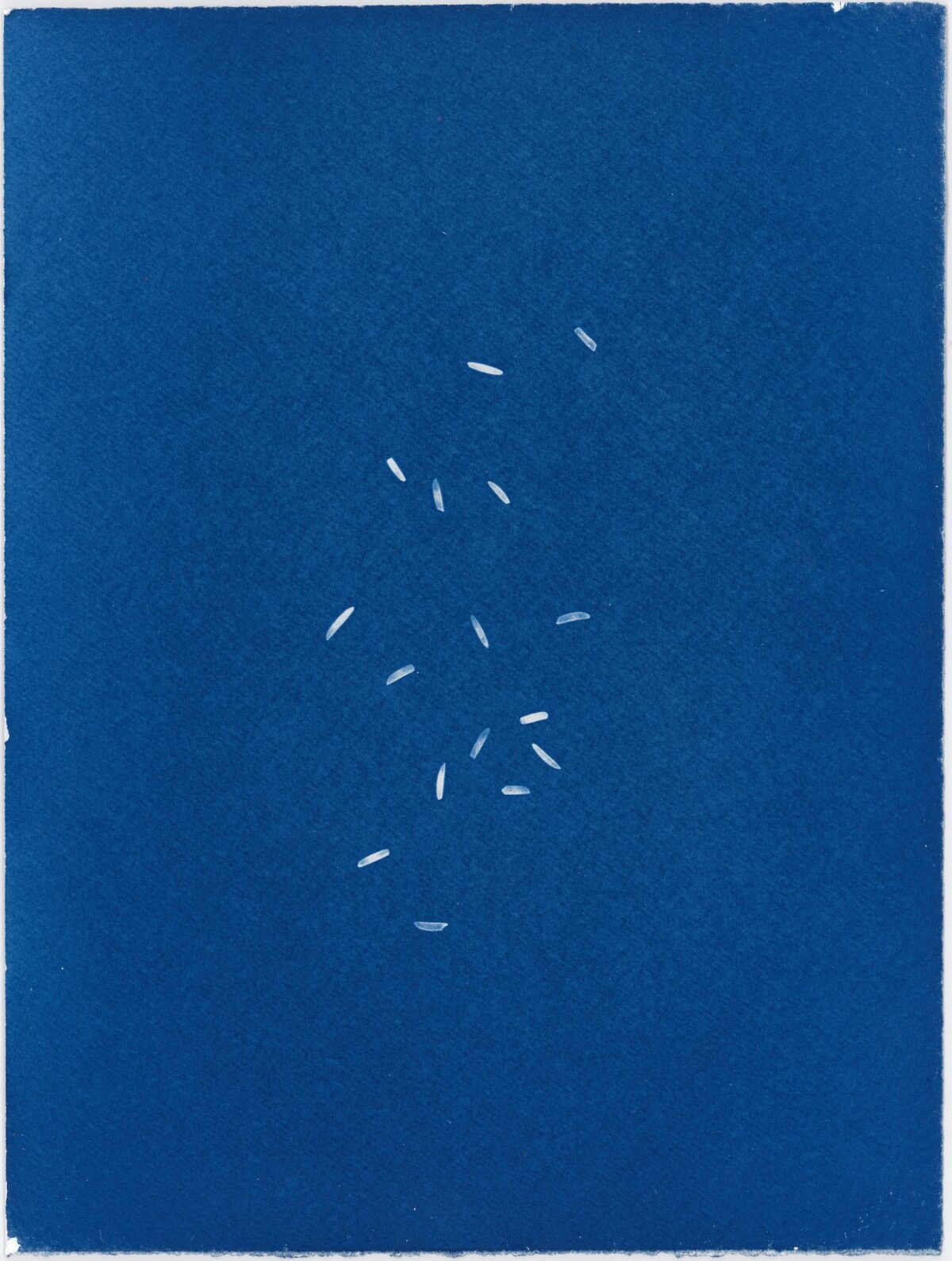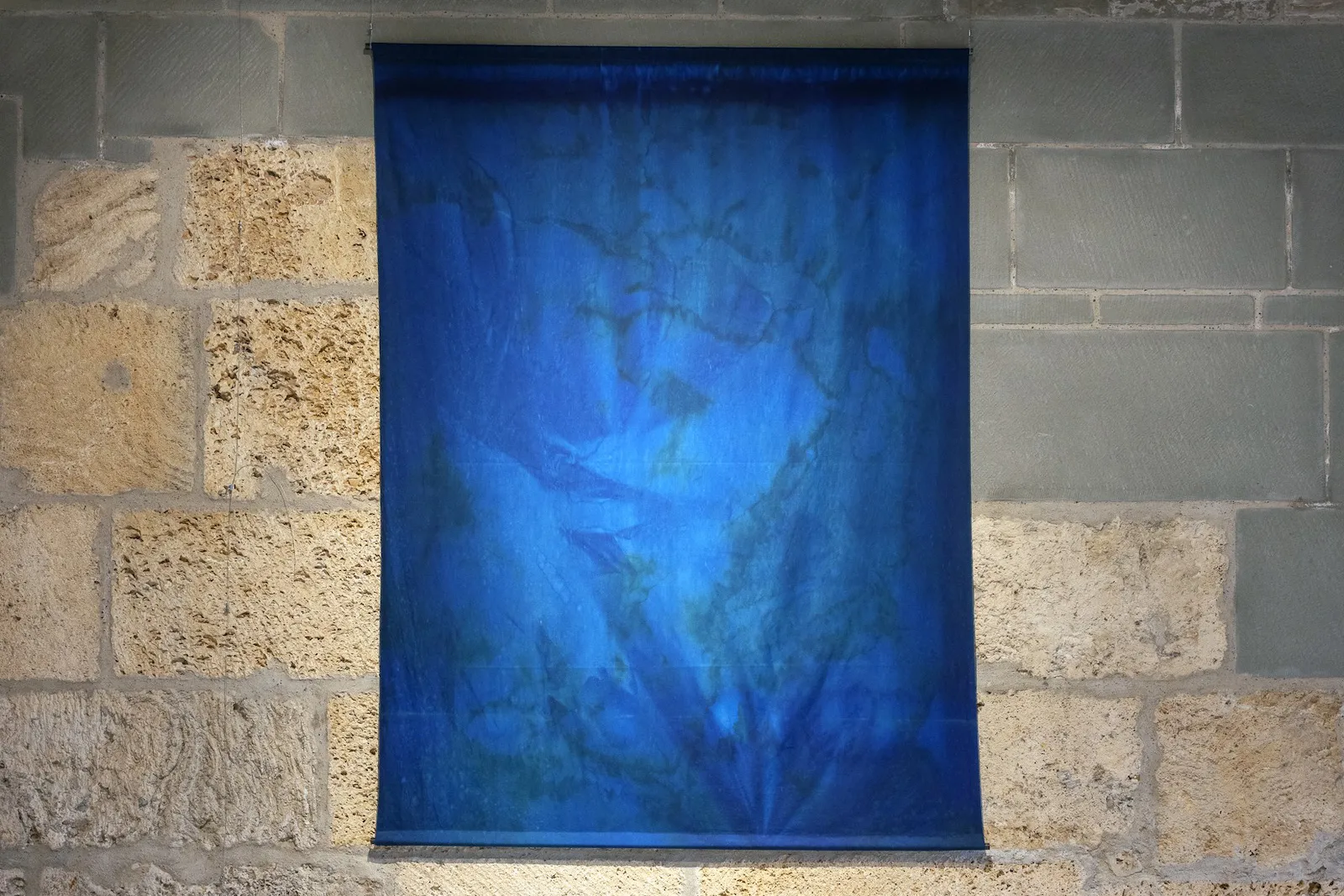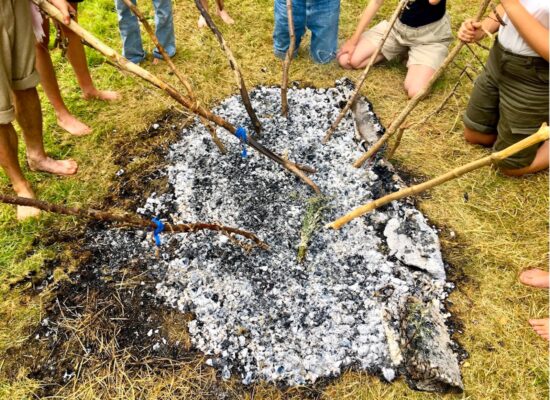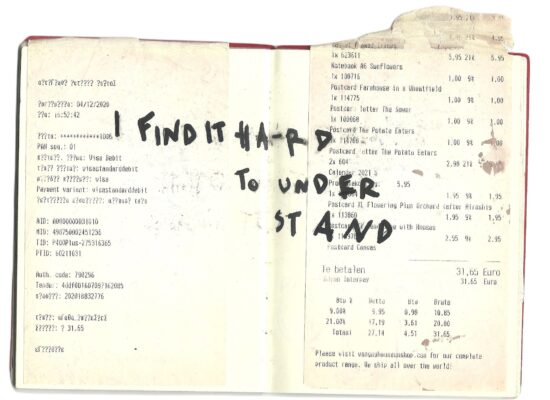Based in Italy and Switzerland
Website https://www.instagram.com/chi__ber
Research project Forget-me-not
Location Multiple sites, including personal and collective archives, cultural institutions, and studio work. This project began in 2017 in Switzerland as my diploma work in the Art in Public Spheres master’s program at EDHEA
Can you describe your research project?
Forget-me-not is an exhibition project, as well as a laboratory, a memorial, and a meeting place. It weaves together indeed forgotten tales of women botanists, scientists, visionaries, rice workers, and radical thinkers, all evoked through the reenactment of the practices they pioneered or developed. By bringing these elements together, the project questions how we bridge the forgotten through artistic practice.
There are large scale cyanotypes, which inscribe the photographic processes Anna Atkins developed. There are prints on fabric in the shape of herbs and flowers, which recall the collecting methods employed by Atkin’s cousin, Anne Dixon, who was a botanist and prolific maker of herbaria. There are petri dishes filled with agar algae, which for the occasion becomes the medium where seeds of rice and forget-me-not can sprout. Agar connects to the materials and techniques that microbiologist Fanny Hesse moved from the kitchen to the lab. She discovered agar’s potential as a growth medium for culturing microorganisms.
The rice and forget-me-not evoke other stories connected to my grandmother Antonia Ceresa and her comrades, the mondine (rice workers). The rice symbolises their struggles in northern Italy’s rice paddies as underpaid seasonal workers, spending about twelve hours a day extirpating weeds in the swamps. The forget-me-not serves as a mnemonic entity, a silent witness to their work. To resist their harsh conditions, the rice workers sang in unison, creating ballads that blended politics and love. These songs are present in my work as art pieces titled in reference to them; they are included in my artist’s book Listen as They Grow and used as background tracks in my exhibitions.

Why have you chosen this topic?
I am drawn to practices, both artistic and otherwise, that expose the structural gaps in our historical narratives. Countless stories remain untold, hidden, or erased, waiting to emerge.
This subject allows me to inhabit a space where personal memory and broader historical truths intertwine—where fragments of my grandmother’s story resonate with those of women I’ve never met, creating both an intimate and universal narrative within my project.

What research methods do you use?
The project involves archival research, reenactments, and feminist theory.
Archival research serves as the foundation for unveiling information about the subjects I am studying. I have been researching Anna Atkins and the history of photography, and her work led me to other photographers such as Julia Margaret Cameron, Gertrude Käsebier, and Claude Cahun. Additionally, my initial research on Atkins opened my eyes to other fields, including the story of Fanny Hesse, a microbiologist who discovered that agar is the ideal laboratory medium. The Reenactment of the techniques and methodologies these women pioneered includes working with cyanotypes, fabric printing, and agar cultures. My focus is on the activities, skills, and methods they created, which I retrieve, study, and reenact to preserve and symbolically pass on their knowledge. This approach aims to illuminate blind spots rather than simply filling gaps, charting a genealogy of women and methods that are discovered, invented, and constructed through feminist practices.
The concept of Risonanza is also fundamental in my research, stemming from the political practices devised by radical feminist Carla Lonzi. If Lonzi envisioned risonanza as a relational process of mutual recognition that enables two women to become subjects together in dialogue, then in Forget-me-not, I expand this notion to create relationships between two or more women who do not necessarily live in the same place or time. Thus, Risonanza becomes a research and composition technique that provides structure to a unique mnemonic strategy based on reenactment.

In what way did your research affect your artistic practice?
My research has expanded my practice to incorporate voices, methods, and stories, guiding me toward an approach that is deeply relational. At the core of this approach is a connection to the collective practices of women, such as the mondine who sang together while working, and Carla Lonzi’s feminist theories, which emphasised the importance of relationships between women.
By reenacting the methodologies and techniques pioneered by these women, I found myself experimenting with practices I hadn’t initially chosen, such as cyanotype, developed by Anna Atkins. Though it may seem restrictive to rely on the specific techniques linked to each woman I research, this approach opens up a surprising degree of randomness and freedom.
It allows me to discover methods I might never have chosen otherwise, creating unexpected pathways in my practice.
Moreover, by blending autobiography with external narratives, I’m revisiting my personal family history and intertwining it with the histories of others. This approach creates a new space for history—not as an official account to accept uncritically, nor as something too intimate for others to relate to. Instead, it occupies a middle ground, inviting a more accessible, shared exploration of the past.

What are you hoping your research will result in, both personally and publicly?
I prefer to think of my research not as a final result, but as the continuation of an ongoing process. It involves drawing connections, collecting stories and experiences, and encouraging others to add their perspectives, creating new pathways on this evolving map.
The result of these operations is an entangled lineage that is anything but linear. It stretches back as strong and deep as the roots of a flower intertwining underground, nurturing one’s thinking and practice and grounding them into a long denied symbolic community. It is a way to pay tribute to the past, work in the present, and envision the future, attuning to the distant echoes of a collective political subject that sings in unison, in the middle of a swamp, under the scorching sun.
(extract from Camilla Paolino, On the work of Chiara Bertin, 2023)





